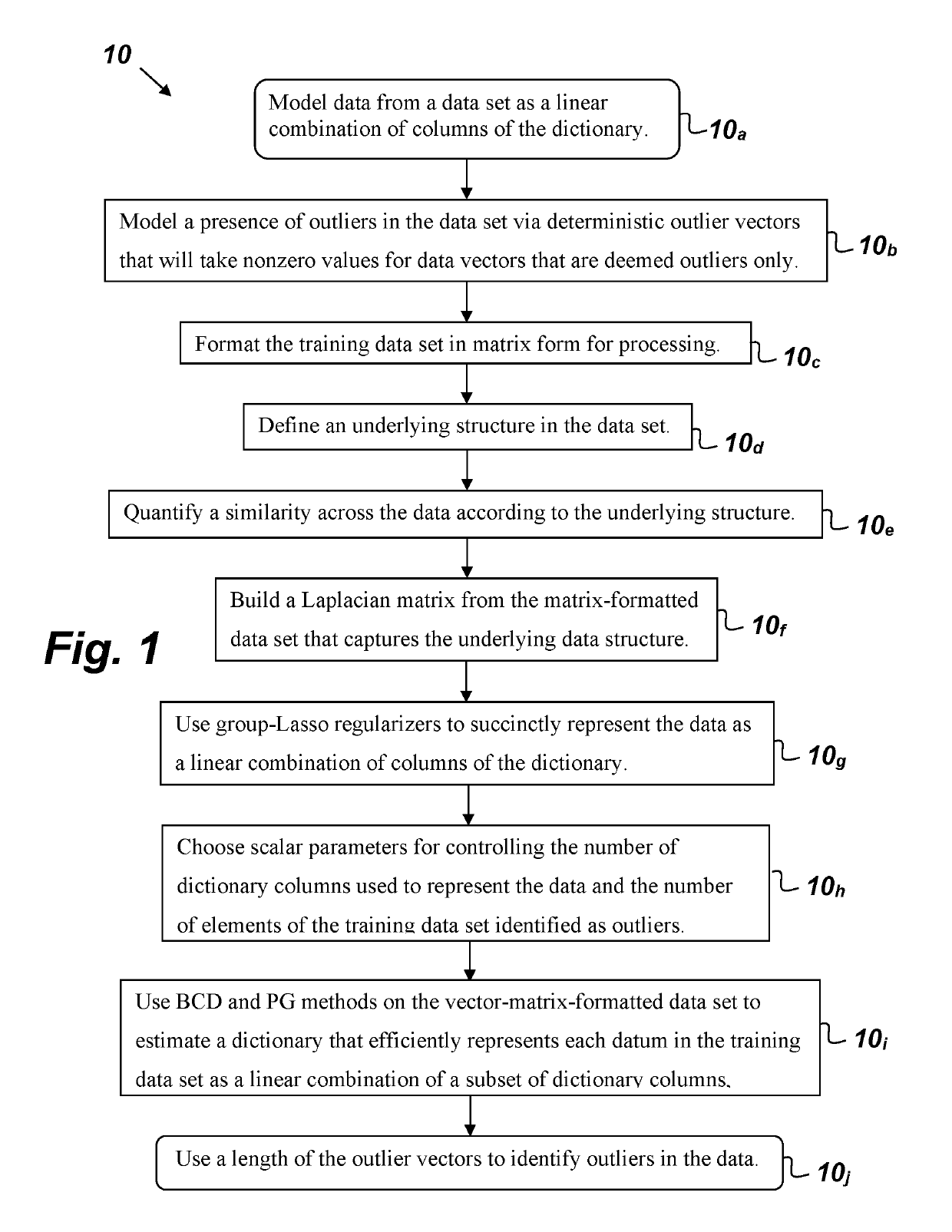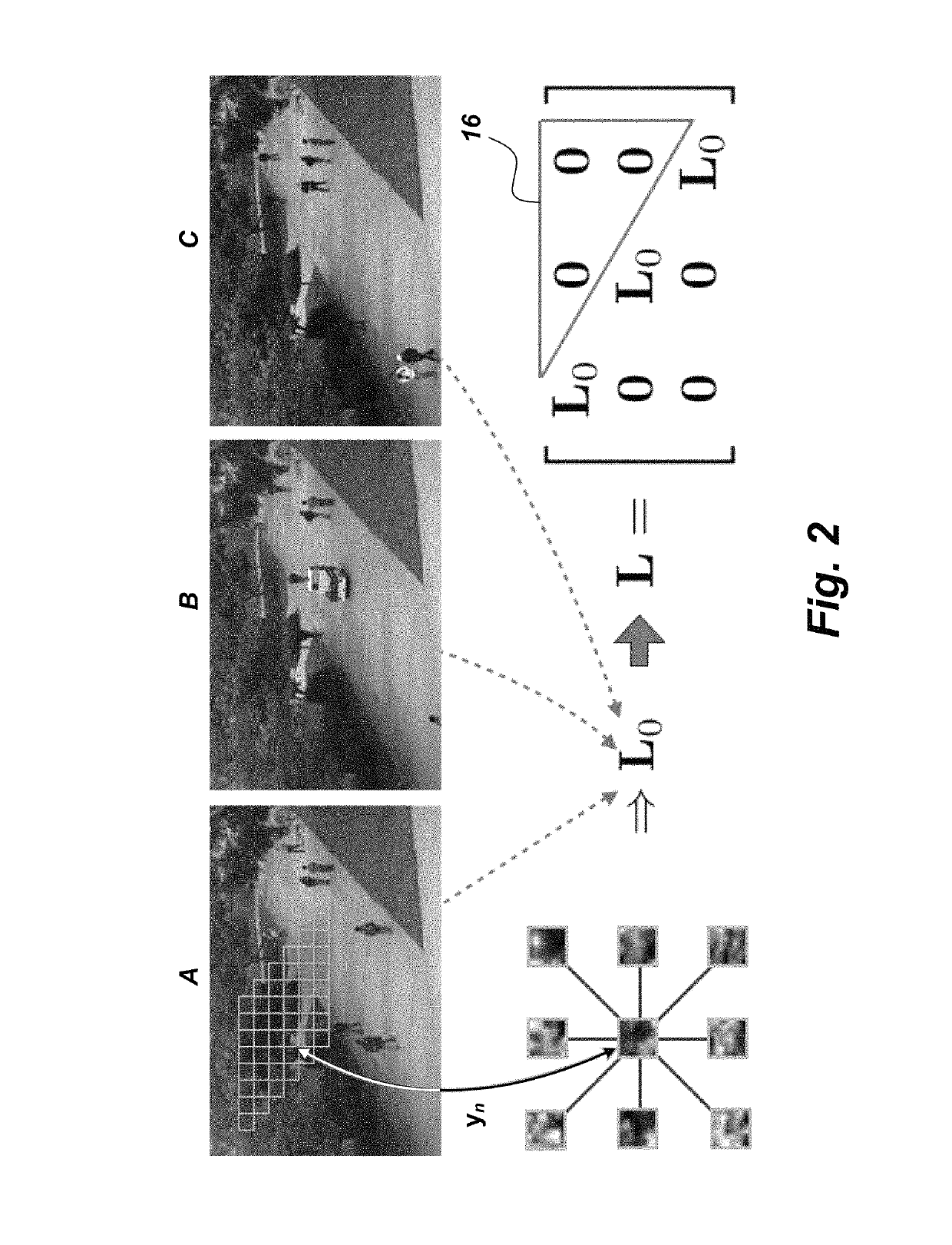Spatiotemporal method for anomaly detection in dictionary learning and sparse signal recognition
a spatial and temporal technology, applied in the field of spatial and temporal methods for anomaly detection in dictionary learning and sparse signal recognition, can solve problems such as the inability to screen all data samples
- Summary
- Abstract
- Description
- Claims
- Application Information
AI Technical Summary
Benefits of technology
Problems solved by technology
Method used
Image
Examples
Embodiment Construction
[0014]The disclosed methods below may be described generally, as well as in terms of specific examples and / or specific embodiments. For instances where references are made to detailed examples and / or embodiments, it should be appreciated that any of the underlying principles described are not to be limited to a single embodiment, but may be expanded for use with any of the other methods described herein as will be understood by one of ordinary skill in the art unless otherwise stated specifically.
[0015]FIG. 1 is a flowchart of a method 10 for constructing a dictionary to succinctly represent data from a training data set that comprises, consists of, or consists essentially of the following steps. The first step 10a provides for modeling the data as a linear combination of columns of the dictionary. The next step 10b provides for modeling the presence of outliers in the data set via deterministic outlier vectors, which will take nonzero values for data vectors that are deemed outlier...
PUM
 Login to View More
Login to View More Abstract
Description
Claims
Application Information
 Login to View More
Login to View More - R&D
- Intellectual Property
- Life Sciences
- Materials
- Tech Scout
- Unparalleled Data Quality
- Higher Quality Content
- 60% Fewer Hallucinations
Browse by: Latest US Patents, China's latest patents, Technical Efficacy Thesaurus, Application Domain, Technology Topic, Popular Technical Reports.
© 2025 PatSnap. All rights reserved.Legal|Privacy policy|Modern Slavery Act Transparency Statement|Sitemap|About US| Contact US: help@patsnap.com



